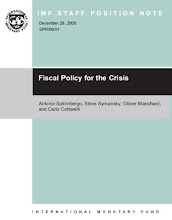In a major boost to pension reforms, that would chalk the path for the future, the government finalized four private asset management companies to manage the funds of the Employees’ Provident Fund Organisation (EPFO), its largest pension fund from September. The chosen four are HSBC AMC, ICICI Prudential AMC, the already shortlisted SBI AMC and a last minute entrant in the group Reliance AMC. The decision ends the 56-year monopoly of the SBI as the sole EPFO fund manager. Around 4.5 cr workers are expected to gain from their asset management expertise on their retirement savings from September 1. The move will also save the fund Rs 2.5 cr per annum in fund management fees. At present, EPFO pays Rs 5 cr to SBI. But the new fund managers have quoted lower fees. While HSBC AMC quoted an asset management fee of 0.00063%, ICICI’s fee was 0.00075%. Both SBI and Reliance Capital quoted 0.01%.
Reliance AMC, was not among the managers shortlisted by the Finance and Investment Committee (FIC) earlier. More so, as SBI scored over Reliance on technical grounds. It was also decided to keep only a minimum three companies were to be finalised to replace SBI. However, Central Board of Trustees of EPFO decoded the rules to appoint four.
The four finalised AMCs will, however, only manage the annual incremental funds of around Rs 30,000 cr. They will also render custodial services for maintaining the previous investments, currently held by SBI. The allocation of fund for the management to the successful bidders, based on the asset management fee, will be decided by the EPFO's finance and investment committee. The funds will however, continue to be managed as per the existing norms, which allow up to 5% equity investment. Currently, EPFO does not invest in the stock market, though there is a proposal to allow the fund to invest up to 10% of its corpus in equity. This plan has been however, intensely resisted by trade union representatives on the CBT.
Reliance AMC, was not among the managers shortlisted by the Finance and Investment Committee (FIC) earlier. More so, as SBI scored over Reliance on technical grounds. It was also decided to keep only a minimum three companies were to be finalised to replace SBI. However, Central Board of Trustees of EPFO decoded the rules to appoint four.
The four finalised AMCs will, however, only manage the annual incremental funds of around Rs 30,000 cr. They will also render custodial services for maintaining the previous investments, currently held by SBI. The allocation of fund for the management to the successful bidders, based on the asset management fee, will be decided by the EPFO's finance and investment committee. The funds will however, continue to be managed as per the existing norms, which allow up to 5% equity investment. Currently, EPFO does not invest in the stock market, though there is a proposal to allow the fund to invest up to 10% of its corpus in equity. This plan has been however, intensely resisted by trade union representatives on the CBT.



